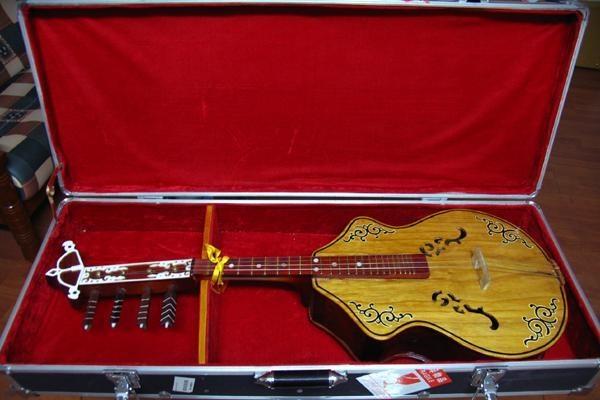Thunder's structure
After the founding of New China, the country attached great importance to the inheritance and excavation of the heritage of folk music, so that the ancient Huobousi was brought back to life.

In the early 1960s, the luthiers of the Hohhot National Musical Instrument Factory cooperated with the Inner Mongolia Song and Dance Troupe and the musicians La Surong and Qinggeltu, who are directly affiliated to Wulan Muqi in Inner Mongolia, and carried out the development of Huobusi. Work, on the basis of traditional Huobusi, a new type of Huobusi has been successfully made.
The top of the qin head is like a quiver, and a full bow with arrows is carved on it, and the four qin shafts on the left side of the qin head are juxtaposed in the shape of four arrow feathers.
The resonance box is in the shape of a flat gourd, and the inner cavity is nearly twice as large as that of the traditional sound box. The traditional process of hardwood as the back and the face skin is no longer used. It is changed to an all-wood resonance box, and the paulownia veneer with fine pine grain is used. As the front panel, the back panel and the frame panel are made of hard colored wood, and the middle of the front panel and the back panel are arched. Beautiful pith texture, like a radial light.
The edge of the speaker is painted with lace trim, which is loved by the Mongolian people. On both sides of the middle and lower part of the panel, there are sound holes in the shape of clouds with ethnic patterns.
Absorbing the design of some stringed instruments, the sound beam is added to the speaker, so that the pronunciation is concentrated, the sound is loud, vigorous, and the timbre is beautiful.
For the convenience of playing and carrying, the stem is shortened and a mahogany fingerboard is added to the neck.
In order to give full play to the national characteristics in performance and accompaniment, there are 24 to 26 bone frets on the fretboard, with copper peaks embedded on the frets, and the frets are arranged in twelve equal temperaments. At one end of the strings, a fine-tuned gear copper shaft is used to hold four nylon steel strings.
 渝公网安备 50010702504639号
渝公网安备 50010702504639号